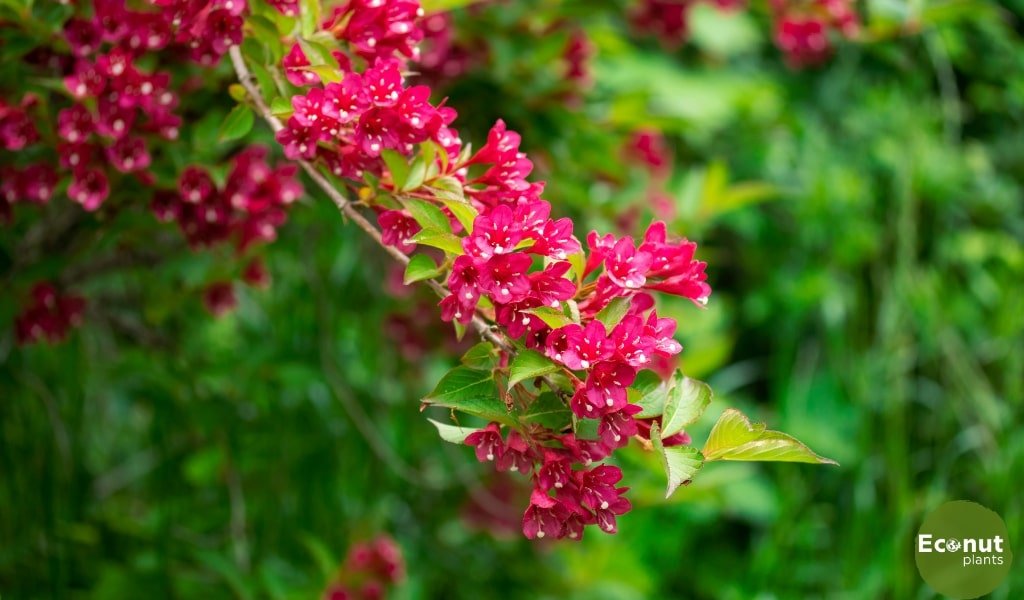If you live in hardiness zone 6, are you looking for some perennial plants for a shaded area of your garden? Is this the first shadow garden you’re designing?
In any case, while planting in the shade, it’s important to choose plants that are right for areas that don’t receive a lot of sun naturally. This post will teach you about our top choices for cold-hardy plants that grow in hardiness zone 6.
1. Columbine

Scientific Name: Aquilegia spp
Plant Type: Perennial, Annual
Sun exposure: Full sun, part shade
Plant Size: 12-18 inches
USDA zones: 3 to 8
These lovely perennial blooms thrive best in milder climates with moderate afternoon shade. They dislike hot weather and become dormant by late July. If the flower heads are not removed when they die, they will reseed and bloom in the spring. They have clover-like foliage and jester-hat-shaped flowers in white, yellow, pink, crimson, or purple.
The flowers hang from the long, slender stalks that grow from the plant. Some plants grow to be 18–24 inches tall, while others remain small. They’re perfect for rock gardens or along fences. Columbines thrive in fairly moist soil that should be re-watered when the top layer dries off.
2. Hosta

Scientific Name: Hosta
Plant Type: Perennial
Sun exposure: Full sun, part shade
Plant Size: 12-18 inches
USDA zones: 3-8
Hostas are among the most colourful and easy-to-grow shade perennials, coming in a wide range of sizes and shapes. Choose from miniatures that stand only a few inches tall or giants that span 6 feet or more.
Look for leaves in colours of green, blue, white, chartreuse, and gold, with many cultivars having attractive variegations. Some hosta blossoms are also highly aromatic.
3. Astilbe
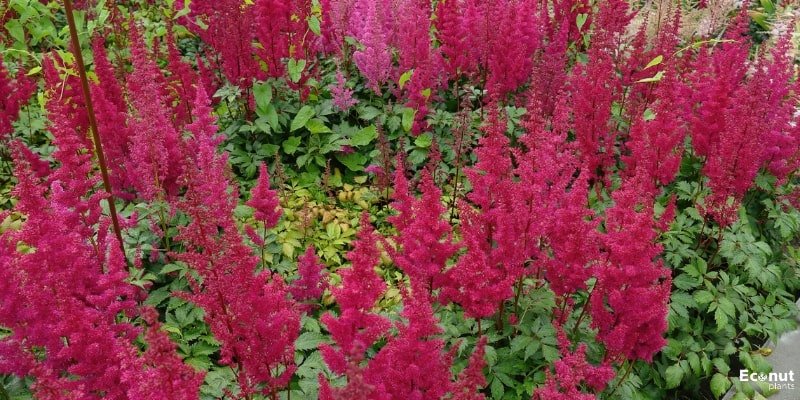
Scientific Name: Astilbe
Plant Type: Perennial
Sun exposure: Full sun, part shade
Plant Size: 3 feet tall
USDA zones: 4-8
Astilbe, also known as fake goat’s beard and false spirea, is an excellent zone 6 shade perennial for adding colour and texture to your garden stand out amid smaller flowers and foliage plants due to its tall, fluffy flower spikes in a variety of pink, purple, red, and white colours.
Astilbe thrives with frequent, even watering, and semi-regular fertilization. While the flowers are blooming, they will attract a lot of butterflies and bees to your yard. Once the flowers have faded, you can either leave them standing or prune them back. Astilbe can also be cultivated in containers and made into beautiful cut flowers.
4. Lungwort
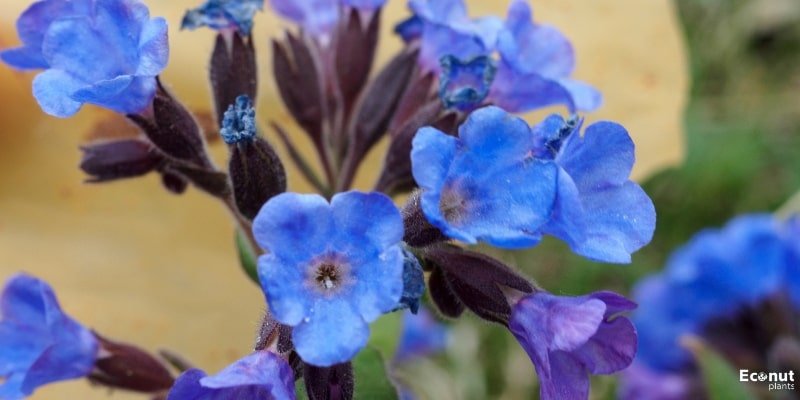
Scientific Name: Pulmonaria spp
Plant Type: Perennial
Sun exposure: Part shade
Plant Size: 6–12 in tall
USDA zones: 3-8
Lungwort is a ground cover that prefers shade and produces blooms that change colour over time. “It provides a lovely silver-green leaf accent, a bright pop of purple-pink blooms in the spring, and is deer-tolerant,” Meholic states. The low-maintenance plant takes care of itself and helps its neighbours look their best as well.
5. Coral Bells
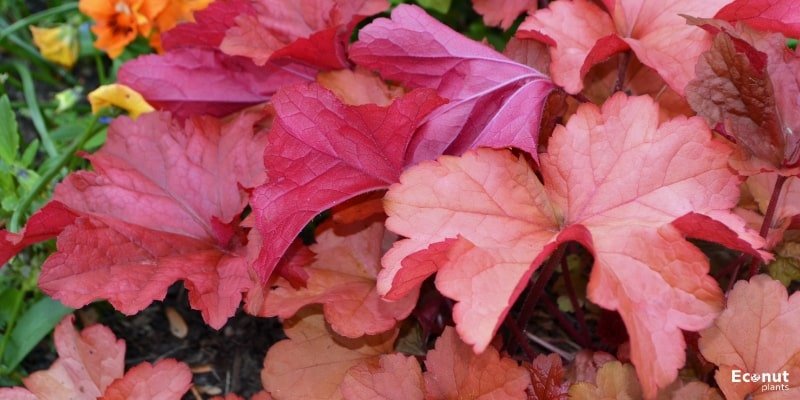
Scientific Name: Heuchera
Plant Type: Perennial
Sun exposure: Part shade
Plant Size: 16 in tall
USDA zones: 4-9
Coral bells’ leaves are almost as colourful as their blooms, with colours of green, purple, black, scarlet, and, of course, coral. They grow in modest mounds and produce tall, bell-shaped flowers in the spring.
Coral bells are generally evergreen in warmer climes, so they add colour to gardens all year.
6. Weigela

Scientific Name: Weigela florida
Plant Type: Perennial
Sun exposure: Full Sun
Plant Size: 3-6 feet tall
USDA zones: 4-8
Enjoy your Weigela shrub year-round. This plant’s beautiful spring blossoms attract hummingbirds. These petite, pink blooms dominate the hedge, which also has lovely variegated leaves. Colourful foliage continues to impress throughout the fall season.
For the best results, plant your Weigela Florida in full sun with well-drained soil. This shrub may still flourish in partial shade and hard clay soil. Weigela grows to be four or five feet tall and can be planted as a single plant or in groups to form a lovely hedge.
7. Corydalis
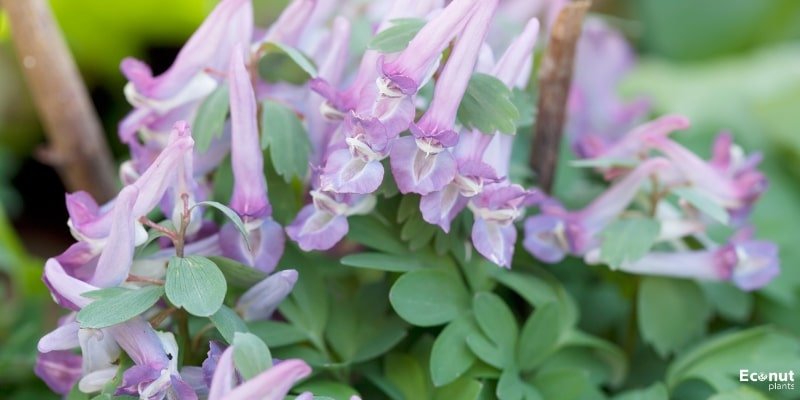
Scientific Name: Corydalis yanhusuo
Plant Type: Perennial
Sun exposure: Full Sun
Plant Size: 12-18 inches
USDA zones: 5-7
This herb has long been utilized in Chinese medicine. It is a relative of the bleeding heart plant and grows from spring to the first frost. Corydalis plants are often found throughout North America, both blue and yellow.
These colourful mound-shaped plants are ideal for garden borders or ground coverings under trees, as well as stacking plants in flower beds or along walkways.
The corydalis can grow up to 15 inches tall, with flower clusters towering over long, thin stalks. They prefer moist, alkaline soil and some shade, although they may tolerate full sun if they are watered regularly.
8. Japanese toad lily

Scientific Name: Tricyrtis
Plant Type: Perennial
Sun exposure: Partial Shade, Full Shade
Plant Size: 2-3 feet tall
USDA zones: 4-8
With a sweet name like toad lily, you’re probably already thinking about adding this plant to your flower garden. The toad lily, also known as Tricyrtis, has unusual flowers that come in a variety of hues and are sure to add interest to your garden.
What’s even more amazing about these plants is that their blossoms are not the only thing that’s multi-coloured. Toad lily leaves are frequently variegated, so they are attractive even when they are not flowering.
The toad lily, like all of the other plants on this list, prefers a shaded location with moist soil. They’re also ideal for container gardens and keeping deer away from other plants! When you place this flowering beauty in the ground,.
9. Indian Pink
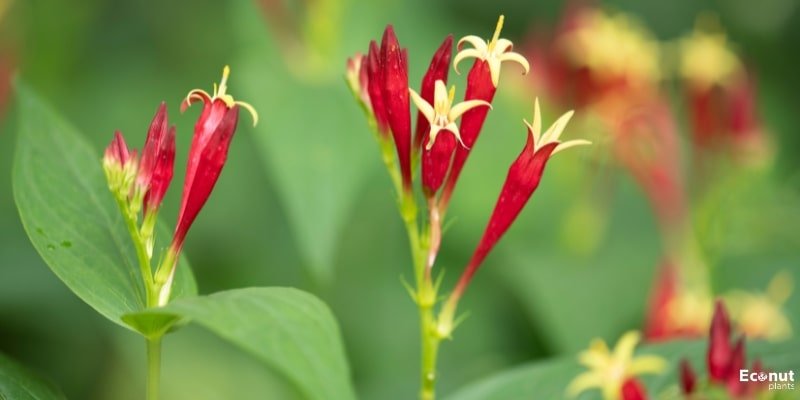
Scientific Name: Spigelia marilandica
Plant Type: Herbaceous Perennial
Sun exposure: Partial Shade
Plant Size: 12-18 inches
USDA zones: 5-9
This gorgeous flowering shade perennial grows to a height of 1 to 2 feet and has eye-catching elongated red flowers that open into a yellow star. Blooming happens in June and lasts for several weeks. Hummingbirds love this robust native plant.
10. Hellebore

Scientific Name: Helleborus
Plant Type: Perennial
Sun exposure: Partial Shade
Plant Size: 3-6 feet
USDA zones: 3-9
If you’re searching for a traditional plant that will add a cottage vibe to your garden, look no further than hellebore. These delicate flowers bloom in late winter and early spring, making them one of the earliest Zone 6 perennials to greet the change in seasons.
This plant prefers a woodland garden or another location with filtered, shady light. Allow plenty of space for this plant to flourish, since it will spread and return for many years. Be patient; the first flowers may take several years to arrive.
11. Bleeding Heart
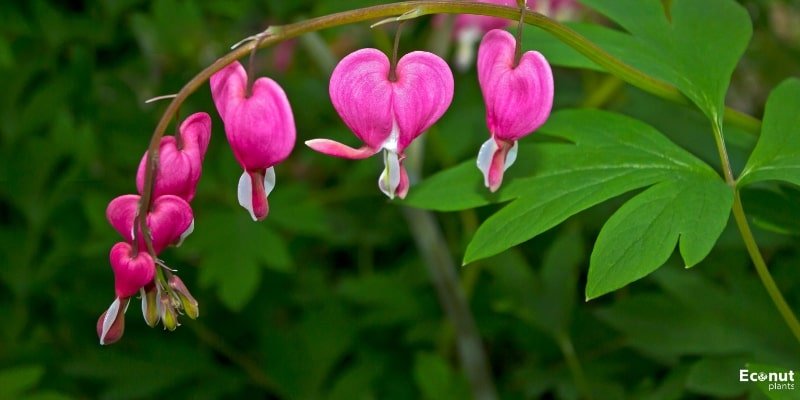
Scientific Name: lamprocapnos spectabilis
Plant Type: Perennial
Sun exposure: Partial Shade, Full sun
Plant Size: 3 feet tall
USDA zones: 2-9
It’s no surprise that the classic bleeding heart is a popular perennial colour. Its finely cut foliage resembles ferns, and in late spring and early summer, it produces pink or white heart-shaped blooms suspended on elegant, arching stems.
By summertime, a bleeding heart normally becomes dormant and loses its foliage. Plant it beside astilbe or hosta to prevent bare spots in your shade garden.
12. Bear’s Breeches
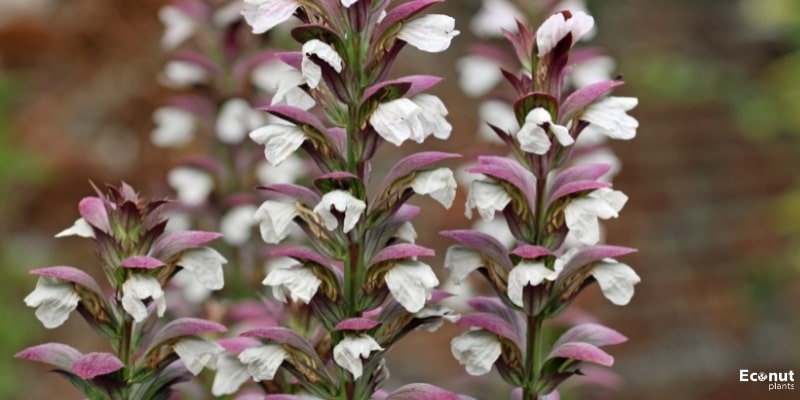
Scientific Name: Acanthus mollis
Plant Type: perennial herb
Sun exposure: Partial Shade, Full sun
Plant Size: 3-6 feet tall
USDA zones: 7-11
When compared to its Latin name, Acanthus mollis, this is a cute name. Despite its adorable blossoms, this plant is more recognized for its leaves. This plant can be cared for simply by placing it in a shady area with well-drained soil. Make sure it is well-watered. It’s that simple. It’s ideal for bordering your landscaping!
This plant survives the winter because of its deep roots. If your climate has hard winters, the plant’s deep roots may be injured and die. In the winter, densely mulch the plant to protect it from freezing temperatures. The mulch functions as a cozy blanket.
13. Foamflower
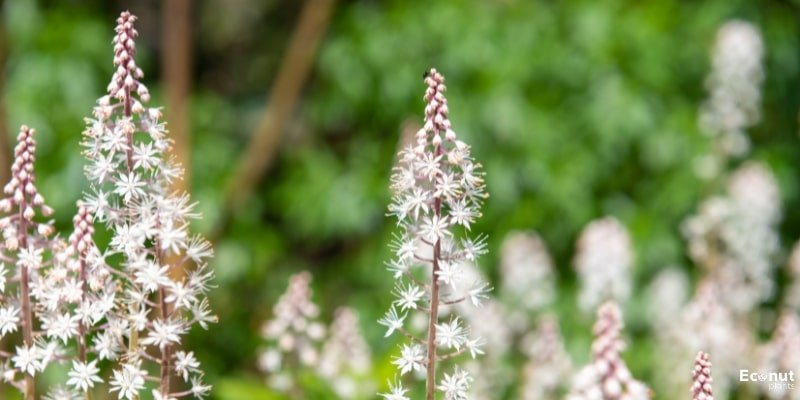
Scientific Name: Tiarella cordifolia
Plant Type: Perennial
Sun exposure: Partial Shade, Full sun
Plant Size: 12-18 Inches
USDA zones: 3-8
Although foamflower is typically slow to develop, it can flourish in shadow and is very appealing. It has a wonderful green leaf with scarlet accents, which are particularly noticeable in the winter,” adds Meholic. “The white blossoms are a lovely bonus in late May.
14. Brunnera
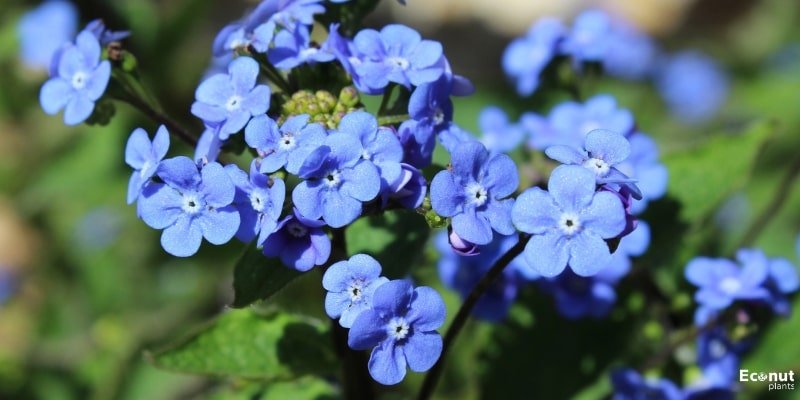
Scientific Name: Brunnera
Plant Type: Perennial
Sun exposure: Partial Shade
Plant Size: 18 Inches
USDA zones: 3-7
In the spring, exquisite bright blue blooms bloom above heart-shaped leaves sprinkled with white. Brunnera is a must-have perennial for any shade garden due to its attractive appearance and cold endurance. It’s also deer-resistant.
15. Japanese Spurge

Scientific Name: Pachysandra terminalis
Plant Type: Evergreen Perennial
Sun exposure: Partial Shade
Plant Size: 5-6 Inches
USDA zones: 4-8
Japanese Pachysandra is a zone 6 evergreen shade perennial that makes an excellent ground cover. It has leathery, dark-green, glossy leaves without woody stalks and blooms white in early spring. It can grow to be one foot tall.
After the bloom season is over, the foliage turns yellow instead of dying, and the roots persist beneath the earth. Once it begins to grow, this Japanese foliage spreads throughout the region and intrudes on other plants if not given enough space.
The pachysandra grows best in partially to totally shaded beds with poor soil. The green plant can also be used in difficult-to-grow areas.

